AMD Scores First Top 10 Zen Supercomputer… at NVIDIA
by Dr. Ian Cutress on June 22, 2020 6:30 PM EST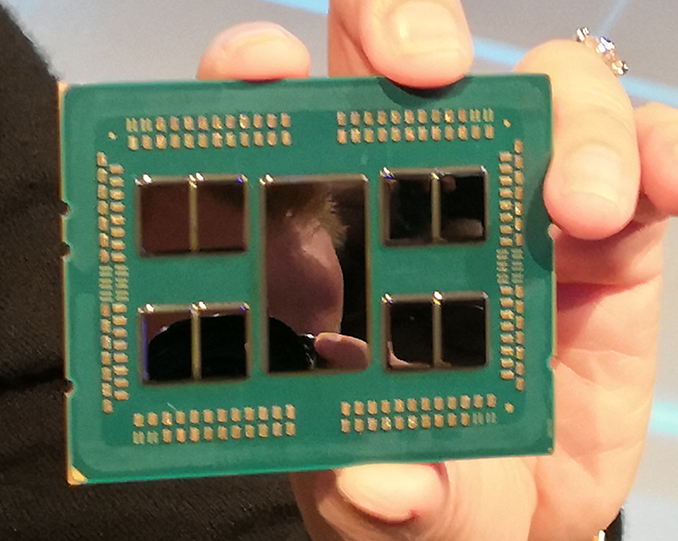
One of the key metrics we’ve been waiting for since AMD launched its Zen architecture was when it would re-enter the top 10 supercomputer list. The previous best AMD system, built on Opteron CPUs, was Titan, which held the #1 spot in 2012 but slowly dropped out of the top 10 by June 2019. Now, in June 2020, AMD scores a big win for its Zen 2 microarchitecture by getting to #7. But there’s a twist in this tale.
Measuring success by the TOP500 list is not so much for scoring revenue, but for scoring prestige. On the database are systems that were built over a decade ago, so a chance to put something into the list on the latest and greatest at a fraction of the size and power ends up being a big promotional opportunity for the company whose hardware is involved (as well as where it ends up being based). Obviously since AMD started introducing its new Zen-based processors, as a return to the high-end of performance after several years, we’ve been wondering how long it would take for a large scale AMD deployment.
AMD has had HPC success in the past, most notably with the Titan supercomputer, built on a mixture of Opteron 6274 CPUs paired with NVIDIA K20x accelerator cards. The machine hit #1 in 2012, and still sits at #12 today. This was a sizeable deployment, coming in at 17.6 PetaFLOPs for 8.2 MegaWatts.
Anand back in the day event went for a look around:
Inside the Titan Supercomputer: 299K AMD x86 Cores and 18.6K NVIDIA GPUs
When it comes to AMD’s Zen designs, the two main CPUs we have to look for are Naples (1st Gen EPYC) and Rome (2nd Gen EPYC). That latter has been getting a lot of attention for having up to 64 high performance cores as well as a lot of memory bandwidth and heaps of connectivity for storage and add-in cards.
However, the first Zen system on the top 500 was technically neither of those.
The Hygon joint venture actually provided the first Zen based supercomputer to join the list in November 2018 at #38. This was a system built at Sugon, the company distributing the Hygon systems, to showcase the hardware. It used 5120 of the Hygon 32 core CPUs. We’ve reviewed and done a deep dive into the Hygon hardware. The Hygon joint venture has since dissolved, but the supercomputer it's based on is still running at #58.
It wasn’t until late 2019 that systems based on AMD EPYC show up. In November’s list that we saw two AMD Naples and two AMD Rome systems push AMD’s total up to six (5 based on EPYC, one on older Opterons). For the June 2020 announcement this week, another seven AMD Rome systems are in the list, making Rome the 10th most popular processor family for supercomputers. But it’s Selene at #7 that’s making the headlines.
Selene is the name of the new supercomputer sitting at #7. For host processors, it is using AMD’s Rome 7742 parts, which are the highest performing commercial parts available that aren’t for specialized markets – technically a list price of $6950 each. What makes Selene a bit odd for an AMD win is that it is part of a supercomputer built with NVIDIA A100 accelerators. And it’s also built for NVIDIA to use at NVIDIA.
When NVIDIA announced its new A100 Ampere accelerator card for compute, it also announced the concept of a DGX A100 ‘SuperPod’, connecting 140 DGX A100 nodes and 1120 A100 GPUs to supply up to 700 PetaOPs of AI-based performance. It turns out that this concept of a SuperPOD also just happens to hit #7 in the TOP500 supercomputer list, which uses more traditional LINPACK FP64 FLOPs, straight off the bat. Each of the DGX A100 nodes contains two AMD EPYC CPUs and eight A100 accelerators.
Selene scores a performance of 27.6 PetaFLOPs of FP64 throughput, for 1.3 MegaWatts of power. Compared to the previous Titan supercomputer, which had Opterons and K20x accelerators, that’s 57% more performance for only 16% of the power, making it almost 10x more efficient. Selene uses NVIDIA’s Mellanox HDR Infiniband for connectivity, and has 560 TiB of memory installed.
At launch, NVIDIA said that a DGX A100 node would cost $199k. This makes the hardware deployment for Selene (minus switches, install cost, cabling) somewhere around $28 million. It’s worth noting that this is technically only 280 EPYC CPUs paired with 1120 A100 GPUs, combined together for 277760 ‘cores’. It seems odd to suggest that 'this is all that is needed' to reach #7.
The wins for AMD on Zen are now (with Rmax):
- #7, Selene, an EPYC 7742 + A100 system for NVIDIA (27.6 PF)
- #30, Belenos, an EPYC 7742 system for Meteo France (7.7 PF)
- #34, Joliot-Curie Rome, an EPYC 7H12 system for CEA in France (7.0 PF)
- #48, Mahti, an EPYC 7H12 system for CSC in Finland (5.4 PF)
- #56, Betzy, an EPYC 7742 system for Sigam2 AS in Norway (4.44 PF)
- #58, PreE, a Hygon C86 system for Sugon, China (4.32 PF)
- #124, Freeman, an EPYC 7542 system for ERDC DSRC (2.5 PF)
- #172, Betty, an EPYC 7542 system for the US Army Research Laboratory (2.1 PF)
- #268, Cara, an EPYC 7601 system for German Aerospace Center (1.75 PF)
- #292, an EPYC 7501 + Vega 20system for Pukou Advanced Computing Center, China (1.66 PF)
- #483, Spartan, an EPYC 7H12 system for Atos, France (1.26 PF)
All of which are new in the past year, except for #58 the Hygon system.
The two main upcoming supercomputers for AMD are both part of the US Exascale project.
Frontier is set to have 1.5 ExaFLOPs of EPYC and Radeon Instinct in a 30 MegaWatt design at Oak Ridge, built by Cray (HPE), for 2021.
El Capitan is set to 2.0 ExaFLOPs of EPYC and Radeon Instinct in a 30 MegaWatt design at Lawrence Livermore National Laboratory, built by Cray (HPE), for early 2023.
The other US Exascale project in the US is Aurora, with 1.0 Exaflops of Xeon and Xe, for the Argonne National Laboratories, due in late 2021.
| US Department of Energy Exascale Supercomputers | |||||
| El Capitan | Frontier | Aurora | |||
| CPU Architecture | AMD EPYC "Genoa" (Zen 4) |
AMD EPYC (Future Zen) |
Intel Xeon Scalable | ||
| GPU Architecture | Radeon Instinct | Radeon Instinct | Intel Xe | ||
| Performance (RPEAK) | 2.0 EFLOPS | 1.5 EFLOPS | 1 EFLOPS | ||
| Power Consumption | <40MW | ~30MW | N/A | ||
| Nodes | N/A | 100 Cabinets | N/A | ||
| Laboratory | Lawrence Livermore | Oak Ridge | Argonne | ||
| Vendor | Cray | Cray | Intel | ||
| Year | 2023 | 2021 | 2021 | ||
AMD is still fervent in meeting its goal of hitting 10% market share for EPYC by the middle of the year. Given that the middle is usually somewhere in Q2/Q3, and we’re set to enter Q3, we should be hearing more about that target soon, and how COVID-19 may have adjusted those expectations.
Related Reading
- El Capitan Supercomputer Detailed: AMD CPUs & GPUs To Drive 2 Exaflops of Compute
- US Dept. of Energy Announces Frontier Supercomputer: Cray and AMD to Build 1.5 Exaflop Machine
- AMD Confirms Zen 4 EPYC Codename, and Elaborates on Frontier Supercomputer CPU
- New #1 Supercomputer: Fujitsu’s Fugaku and A64FX take Arm to the Top with 415 PetaFLOPs
- An Interview with AMD’s CTO Mark Papermaster: ‘There’s More Room At The Top’
- An Interview with AMD’s Forrest Norrod: Naples, Rome, Milan, & Genoa
- Intel’s 2021 Exascale Vision in Aurora: Two Sapphire Rapids CPUs with Six Ponte Vecchio GPUs


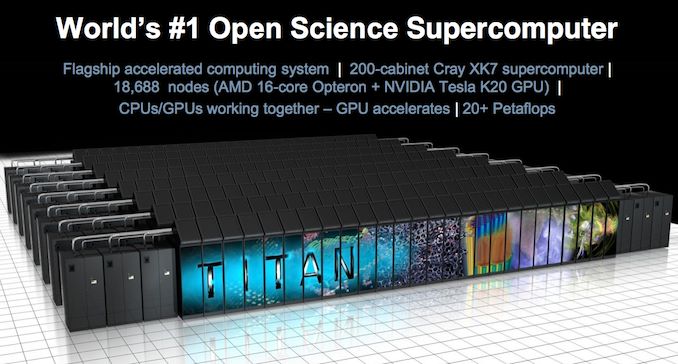
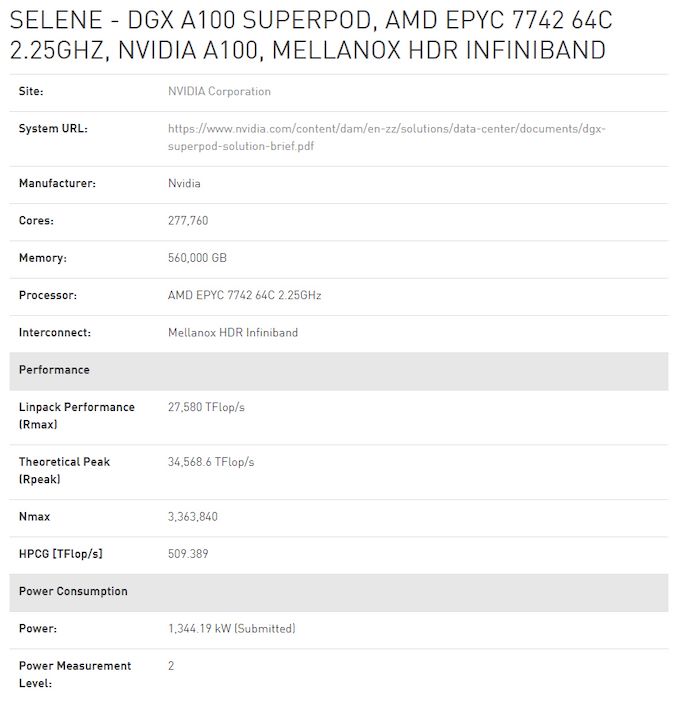
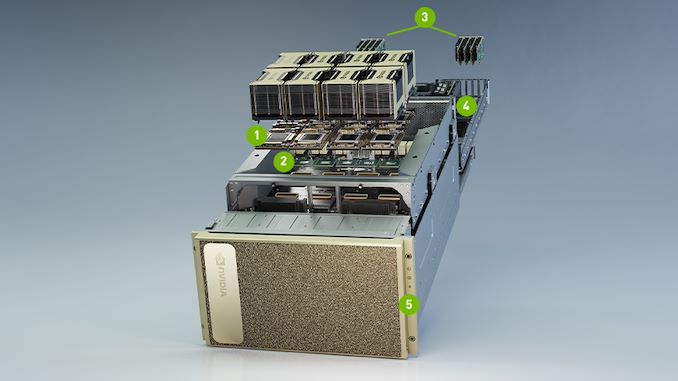
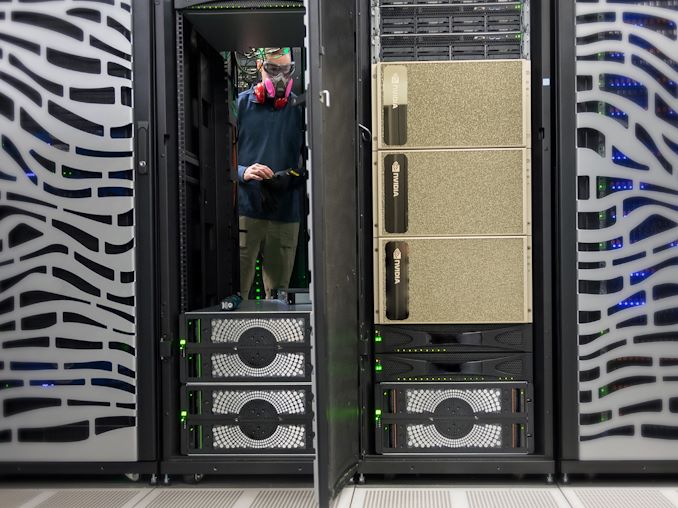








46 Comments
View All Comments
bananaforscale - Wednesday, June 24, 2020 - link
The unit is FLOPS, not FLOP. FLoating point Operations Per Second. Not FLOP.Someguyperson - Monday, June 22, 2020 - link
I'm sure Jensen got the "friends & family discount" from his first cousin once removed.PreacherEddie - Monday, June 22, 2020 - link
And my Phenom II X3 sits just outside the Top 500, although it is not new for this year.eastcoast_pete - Monday, June 22, 2020 - link
That's my favorite comment here so far, but then, I'm in a strange mood this evening...But, seriously, good to see that EPYC is making inroads here. Regarding older AMD systems, maybe I should take my old Athlon x64 (two cores!) out of storage and see what's what over a decade later.
Lord of the Bored - Tuesday, June 23, 2020 - link
If I had a spare ATX case right now, I'd boot my 1.3 Thunderbird up. But I don't, so I won't.What I DO have is a 500 MHz K6-2 in an AT case.
...
Yeah, that's not gonna be going very far in the modern world. I GUESS I could install Windows XP on it, but... it doesn't sound like a good time. Let's keep it with DOS and Win98.
Spunjji - Friday, June 26, 2020 - link
My old XP install on an Athlon 750 with 128MB RAM was a bad time, so I imagine it would be pretty heinous on a K6-2 D:schujj07 - Tuesday, June 23, 2020 - link
That CPU was faster than the fastest supercomputers in the world in the mid 90s.yeeeeman - Tuesday, June 23, 2020 - link
Well, this is kind a lacklustre win, since most of the compute power in this supercomputer is made by the nvidia agx100 cards, not by the epycs.Sharma_Ji - Tuesday, June 23, 2020 - link
Run troll, run.Unashamed_unoriginal_username_x86 - Tuesday, June 23, 2020 - link
... I mean, it doesn't seem wrong to me. A100s are significantly more expensive, have about 2.5x peak fp64 (from a quick google), and there are 4 per 7742.